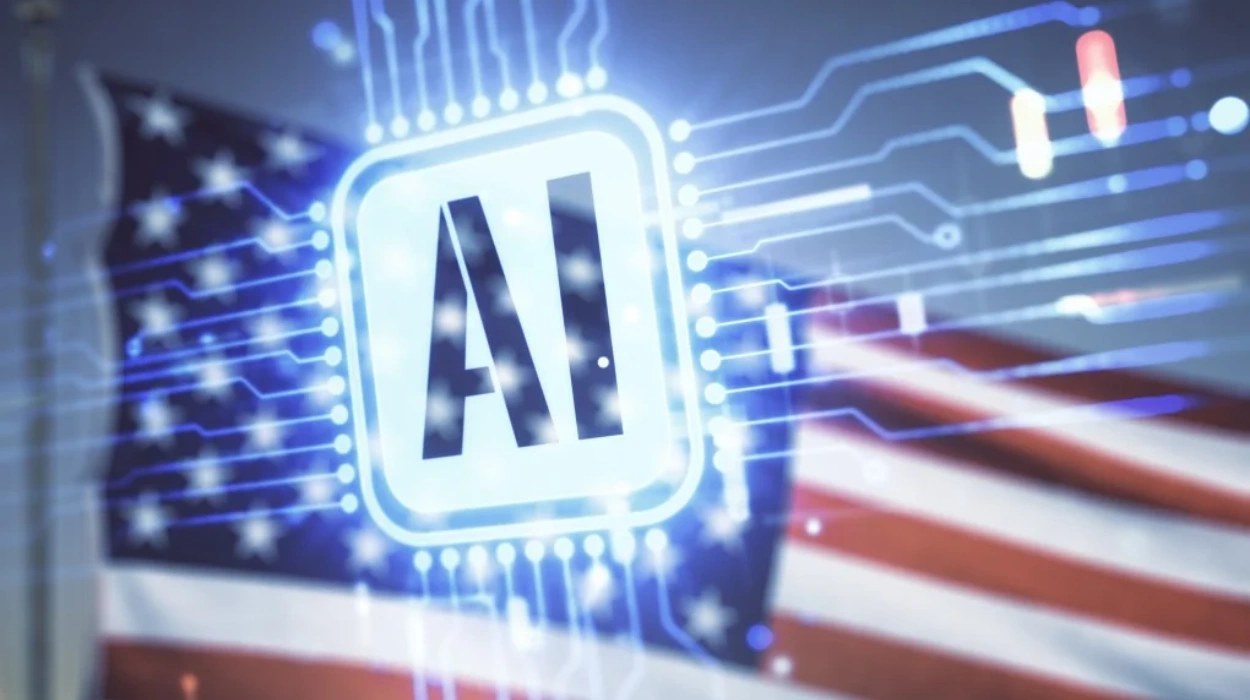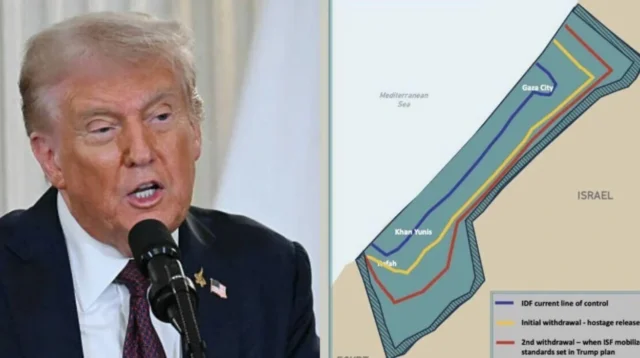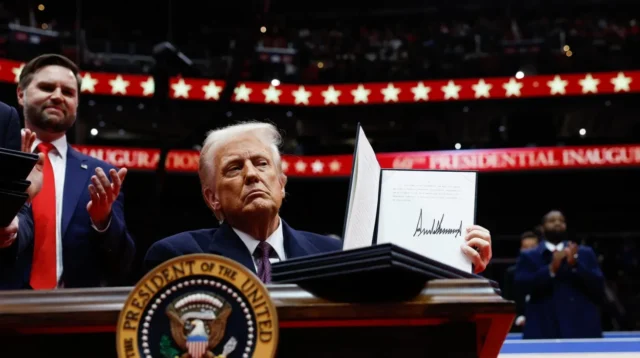In 2025, the Biden government had a change of mind, rolling back on main export controls regarding complex chip technology, a major landmark in the American AI chip policy. Years of curbing shipments of chips to China, mainly high-performance graphics processing units that are used in artificial intelligence, saw Washington start to grant exemptions and think of wider waivers. This is a U-turn that comes after tech giants in America, such as Nvidia and Intel, lobbied against it, due to the tensions between concerns about national security and industrial competitiveness.
Initial export restrictions implemented in early 2022 and broadened in the following year were aimed at limiting access of Beijing to chips that serve as the driving force in AI training and human warfare. Companies however argued that these restrictions gave it huge losses of revenue and were threatening to lose world markets to other companies in other countries. Due to the increased pressure related to financial issues and political pressure, the administration started reconsidering the range of its restrictions and started implementing them, which concluded in the recalibration of the policies in the Q2 of 2025.
Lobbying and Market Pressures Behind the Reversal
The Role of Corporate Advocacy
Technology companies had a pivotal influence in leading this change of policy. The biggest players in the industry claimed that the import restrictions not only failed to help curb Chinese technology aspirations but also they also had a negative effect on the international positioning of the American chip industry. Nvidia reported that at its 2025 earnings call, greater than 25 percent of its high-performance GPU business sales had been to Chinese customers in the past. Without that market, executives had threatened to lay off workers, cut R&D investments, and in the long run there were threats of lack of competitiveness.
Intel, likewise, noted that it relied on universal demand to fund its foundry development along with a technology roadmap. U.S. chipmakers collectively lobbied the Commerce Department and Congress, asserting that while national security remains a priority, indiscriminate bans could inadvertently weaken America’s own technological edge by reducing scale, innovation budgets, and pricing power.
The Structure of Legalized Influence
Former Labor Secretary Robert Reich has spoken on the topic, warning that
“America’s democracy is under siege from the legalized bribery of corporate lobbying, where influence is for sale and public trust is the casualty.”
This is how our government has been corrupted:
— Robert Reich (@RBReich) July 27, 2025
1) Donors give huge sums to elect politicians to office.
2) Elected officials rewrite the rules in the donors' favor.
3) Donors make a huge profit.
4) Repeat.
For the sake of democracy, we must get Big Money out of politics.
This assessment aligns with growing scrutiny of the revolving door in tech policy, where former officials transition into industry roles and shape policies from within. Several former National Security Council staffers, now employed by AI and semiconductor companies, have played behind-the-scenes roles in framing the debate as one of economic survival rather than geopolitical confrontation.
National Security vs. Market Dominance
Strategic Goals of the Original Export Controls
When the initial restrictions were introduced, U.S. officials described them as essential to halting China’s military AI capabilities. High-bandwidth memory chips and advanced GPU architectures were considered dual-use technologies with direct implications for autonomous weapons, surveillance platforms, and missile guidance systems. The policy sought to deny China the ability to train large-scale AI models, a strategic chokepoint in emerging security competition.
However, as the controls evolved, so too did China’s tactics. Beijing accelerated domestic R&D efforts, fostered state-subsidized chip startups, and routed acquisitions through third countries to bypass restrictions. These developments, combined with pressure from U.S. firms, contributed to Washington’s reassessment of the efficacy of blanket bans. The revised strategy now aims to target military-linked end users more precisely while permitting broader commercial activity.
Risks of Eroding Long-Term Deterrence
This recalibration raises questions about the long-term strategic implications of America’s AI chip policy. National security experts argue that even marginal technological transfers can compound China’s capabilities, particularly in training foundation models used for military and intelligence purposes. Critics of the reversal say a commercially enforced containment framework is being eroded by business and trade pressures and this could be hastening the same danger it was supposed to postpone.
Policymakers are currently stuck between a rock and a hard place: coming up with focused controls that will allow U.S. companies to remain competitive on the global stage without giving its adversaries any opportunity to gain a step ahead in crucial technologies. The success of such a new posture relies significantly on the coordination of intelligence, mechanism of enforcement, and transparency across chains in terms of technology.
Competing Global Frameworks and Strategic Divergence
Shifting Regulatory Alignment Among Allies
The United States has been on the front of forming a common line on the pulling of the semiconductors. In 2024, it gained some conformity with Japan and Netherlands where equipment makers such as ASML are based. Nevertheless, discrepancies in enactment and exception have been introduced in 2025 as European firms demand autonomous trade relations and warn against using American strategic definitions excessively.
This inconsistency makes it difficult to come up with a common control regime. Some of the allies in the U.S. have not been keen to endorse this completely mainly due to their reassuring measures that might lead to revengeful action by the Chinese or other such measures that might cost their American companies locally. The trick will be to unite the urgency of short-run economic interests to the long run security requirements in an age where eco systems of technologies are being connected globally.
China’s Accelerated Self-Reliance Strategy
In response to Western export controls, China has intensified efforts under its “Digital Sovereignty Initiative,” funding domestic chip design, fabrication, and AI model development at unprecedented levels. By June 2025, several firms in China have fabricated domestically developed AI accelerators, which are comparable to limited Western GPUs. Although the US remains less efficient and of smaller scale, state-supported consortiums and a growing talent pool have slowly reduced the differences.
Through Southeast Asia and the Middle East, Beijing has also diversified its sources of supply using intermediaries to skirt the controls. This reconfiguration of the world indicates that the containment of technology might not be an end product but only a stage in this long journey given how China has been changing its rules and regulations on investments to accommodate the move towards tech independence.
Public Perception and Institutional Tensions
The reversion of the policy has faced criticism by lobby groups and members of legislatures who have called out the need to be more open on matters relating to national security decisions influenced by corporate contributions. In early 2025, there were contentious Senate hearings on the role of lobbying in key technology choices. Both the lawmakers, belonging to different parties, raised questions regarding whether national priorities were being acquiesced to shareholder interests.
Watchdog groups as well as government organizations such as the Government Accountability Office have demanded that the lobbying process be reviewed independently as well as the reasoning behind the change of export rules. Those are not just chip issues; they are larger issues of control when whatever can be done is done by the private sector and limited by government control.
Implications for U.S. Technology Leadership
Even through such uncertainty about strategy, the United States is leading in the key areas of AI infrastructure, chip design and foundational model development. The problem is not that capacity will be lost but that there is a danger of losing trust, of the reputation of regulatory integrity, of strategy coherence and the principle that public policy is not insulated from financial motives. Policymakers have to ascertain that the new direction does not imply sustainable advantage but only postponement of hard trade-offs.
The debate also has an element of generation. Although those in top leadership positions might have more of the short-term sense of deterrence, young technologists and entrepreneurs are worried about ethical and democratic considerations that are imposed with closed-door decision-making and unregulated lobbying. This contradiction indicates a social reckoning in general with corporate power and its formation of national interest.
The path of the American policy on the AI chip will also be closely followed not only by their global competitors and allies, but also by the people in the country that are interested in the answer to the question whose interests national security promotes. It is an open question whether artificial intelligence will challenge the new equilibrium and put pressure on the profit, politics, and power in the industry.





